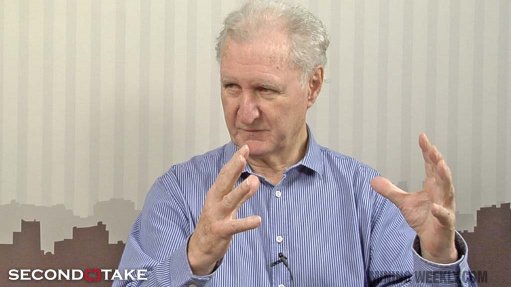MCA defends Australia’s coal industry as TAI calls for moratorium
PERTH (miningweekly.com) – The Minerals Council of Australia (MCA) has labelled analysis by The Australia Institute (TAI), which claims that the economic impacts of a moratorium on new coal mines and expansions will be “small”, as “nonsense”.
Responding to a TAI report on a coal moratorium to allow for a “gradual phase out” of the industry, MCA executive director for coal, Greg Evans, defended Australia’s second-largest export industry and the contribution that it makes to the national economy.
“Annual coal exports at A$38-billion in 2014/15 are almost twice those of beef, wheat, wool and wine combined so under their [TAI’s] logic eliminating those great industries would also have negligible consequences.
“This is nonsense, as the contribution to national income from coal exports improves the living standards of all Australians and the taxes and royalties contributed by the coal sector assist in the provision of vital economic and social infrastructure.”
Evans pointed out that there were 44 000 direct jobs in the coal sector and including related jobs, the number was around 150 000, with the majority of those in regional areas.
“The TAI should travel to the Hunter Valley and Bowen basin coal towns and promote their economic thesis that the coal industry doesn’t matter.
“Coal workers would be especially concerned that the supporting modelling does indicate significant economic dislocation including both job losses and much lower wages in their industry.”
In its report, the TAI noted that the coal industry employed less than 0.4% of the Australian workforce and its royalties contribute just 2% of revenue to the New South Wales and Queensland budgets.
The TAI said that if a moratorium was imposed on the construction of new coal mines, Australia’s coal production would decline gradually as existing mines reached the end of their economic lives, but noted that existing mines and those already approved could still produce tens of millions of tonnes of coal into the 2040s.
In its financial modelling, the TAI noted that Australian economic growth is barely affected by a moratorium on new coal mines, with a difference in gross domestic product (GDP) in 2040 of 0.6% between the two modelled scenarios - that of business as usual wherein no moratorium is imposed, and a scenario where the moratorium goes ahead as proposed.
In either case, GDP is estimated to reach A$3-trillion in 2040, around twice the size of the current economy.
“As the coal industry is capital intensive, and a small employer, the impact of a moratorium on building new coal mines on employment in Australia is even smaller than the impact on GDP. While the impact on employment is so small as to be imperceptible in the main chart, the difference in employment peaks at 0.04% in 2030, before the gap closes again as more labour intensive industries expand,” the report said.
Furthermore, while the TAI conceded that coal exports made up a large portion of Australian exports, some 12% in 2015, it stated that overall export values were not projected to differ significantly as a result of introducing a moratorium on new coal mines, with the green think tank saying there was an estimated reduction of around 1% expected in the final years of the analysis period.
“This small impact is due to the gradual phase-out and the ability of other industries to increase exports.”
Evans said the TAI had been blind-sided by the continuing strong demand for high-quality Australian coal from traditional markets in Asia and the growing opportunities in South East Asia.
“Furthermore, the improved coal price since the beginning of the year (an increase of 40% for thermal coal and 158% for metallurgical coal) has left a gaping hole in their previous economic prognostication that the industry was in terminal decline due to the uptake of other energy sources.
“The significant economic expansion occurring in Asia is heralding a large-scale build of clean, efficient coal-fired power plants, the likes of which we have never seen before. Some 725 units are already operating with an additional 1 142 units under construction or planned.”
Comments
Press Office
Announcements
What's On
Subscribe to improve your user experience...
Option 1 (equivalent of R125 a month):
Receive a weekly copy of Creamer Media's Engineering News & Mining Weekly magazine
(print copy for those in South Africa and e-magazine for those outside of South Africa)
Receive daily email newsletters
Access to full search results
Access archive of magazine back copies
Access to Projects in Progress
Access to ONE Research Report of your choice in PDF format
Option 2 (equivalent of R375 a month):
All benefits from Option 1
PLUS
Access to Creamer Media's Research Channel Africa for ALL Research Reports, in PDF format, on various industrial and mining sectors
including Electricity; Water; Energy Transition; Hydrogen; Roads, Rail and Ports; Coal; Gold; Platinum; Battery Metals; etc.
Already a subscriber?
Forgotten your password?
Receive weekly copy of Creamer Media's Engineering News & Mining Weekly magazine (print copy for those in South Africa and e-magazine for those outside of South Africa)
➕
Recieve daily email newsletters
➕
Access to full search results
➕
Access archive of magazine back copies
➕
Access to Projects in Progress
➕
Access to ONE Research Report of your choice in PDF format
RESEARCH CHANNEL AFRICA
R4500 (equivalent of R375 a month)
SUBSCRIBEAll benefits from Option 1
➕
Access to Creamer Media's Research Channel Africa for ALL Research Reports on various industrial and mining sectors, in PDF format, including on:
Electricity
➕
Water
➕
Energy Transition
➕
Hydrogen
➕
Roads, Rail and Ports
➕
Coal
➕
Gold
➕
Platinum
➕
Battery Metals
➕
etc.
Receive all benefits from Option 1 or Option 2 delivered to numerous people at your company
➕
Multiple User names and Passwords for simultaneous log-ins
➕
Intranet integration access to all in your organisation

















